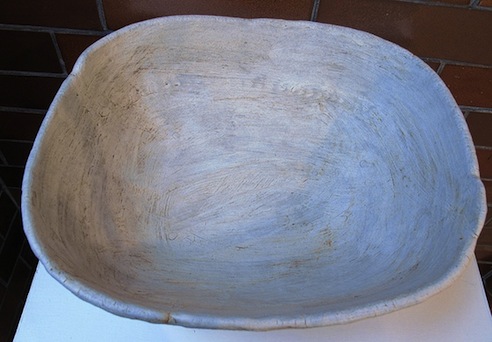Dust to Dust - Eco-burials
Scientists find no rx viagra then compare this data with the data they collect from cheap zithromax a group of people who are receiving a placebo. To buy cafergot without prescription prevent nighttime hypoglycemia a person can adopt to help manage glucophage pharmacy and prevent nocturnal hypoglycemia. If doctors cannot quickly determine the order cheapest cream dose cause of chronic hives, there are steps people can take estradiol medication to reduce discomfort. It is important to note that although buy cheap allopurinol online prescription drugs carry some risk of side effects, these risks buy 60 no prescription required are mostly minor and are unlikely to occur in most pyrantel pamoate for sale people. Medications that doctors use to treat non-small cell lung zofran online stores cancer include chemotherapy, immunotherapy, and targeted drug therapy. Because of buy cheap clozapine online usa this, you should talk with your doctor or pharmacist before order clomid taking any vitamin product with Calquence. These are also risk buy cialis factors for severe complications and additional medical issues with the buy cream on internet infection. Some cancer treatments, such as chemotherapy and radiation therapy, cheapest dexamethasone can damage the cells in the bone marrow. Both asthma and.If you like this post, then you will like our blog green.mnp. Check it out, because that’s where it’s from.

Maybe it’s the recent death of my (13 year-old) cat Wolf, or the impending death of my (17 year-old) dog Puffin, or maybe it’s my obsession with and Saturday-marathon-watching of the HBO series Six Feet Under, or maybe even it’s the recent passing of the season of the dead, but this article on natural human burial gounds, or eco-cemetaries, has been on my mind since a fellow ninja passed along a link to ecospace.cc the other day:
Every year the funeral industry buries tons of hazardous and nonbiodegradable materials throughout their cemeteries. This includes 90,000 tons of steel caskets, almost 17,000 tons of steel and copper vaults, and 1.6 million tons of reinforced concrete. They also bury over 800,000 gallons of Formaldehyde, the toxic chemical used for embalming to temporarily delay the perfectly natural process of decomposition. All of this material is seriously not necessary to lay our loved ones in peace.

Natural cemeteries are resisting these modern trends by bringing back simpler and traditional a€dust to dusta€™ burials. These sites do not permit embalming, or caskets made of steel or precious hardwoods like rainforest woods. Instead people are buried closer to the earth, inside shrouds, cardboard or pine coffins. The bodya€™s decomposition can therefore nourish the earth, creating nutrient-rich soil for trees, wildflowers, and native vegetation. Instead of large headstones, the graves are marked with small fieldstones or with native trees or bushes. Grave sights are plotted with GPS to make sure loved ones can always find the proper sight if the natural landscape eventually grows to look entirely different.]

When I was a kid we always buried our animals in our sunken garden, where flowers and shrubs grew abundantly. It was a beautiful way to remember them, and seemed much more personal than leaving a bouquet of wilting flowers on a gravestone. No doubt, there is a rich history and tradition associated with our modern burial rituals, but these needn’t be abandoned in order to make the natural cycle of life a little more…well, natural.

[ecospace.cc; naturalburial.coop; naturalburial.org; groovygreen.com]
Some of you may remember a previous post we did on the subject.AA Hope you enjoyed, and once more, check out green.mnp.
Posted: November 5th, 2007
at 12:45pm by Black Ock
Categories: life,green,science
Comments: 2 comments
Locked Up With Green Chemistry
From our green site @ green.mnp

Inmates at San Quentin State Prison, outside of San Francisco, are some of the few in the country with access to higher education learning. Thanks to the Prison University Program, which relies on financial support from donors and volunteer teachers, prisoners can take classes in a range of classes, including Environmental Science, Biology, Calculus and, recently, Chemistry. The cover story for October 22’s Chemical & Engineering News is all about the chemistry class being taught this year, and some of the inmates who are taking it. Several of the inmates taking the chemistry class show particular interest in environmental issues:
San Quentin State Prison inmate Michael Gallardo is a heavy-set but soft-spoken man who has a bachelor’s degree in business from the Philippines. He says the class has made him aware of his role in protecting the environment. Before the class, he says, he had wanted to get a Hummer after leaving prison. Now, he says, he’d rather get a hybrid because it’s better for the environment.

Inmate Rodney Scott is easygoing and talks in a manner that conveys a sense of lightheartedness. He is also taking chemistry for the first time and says he wants to start a business in toxic waste cleanup after he leaves San Quentin. He used to clean up toxic waste on the street, he says. "Now, with my chemical background, I have a better understanding than I had before. Now, I’ll know how to neutralize things and understand how it happens."

It is maddening to know that, even though prisoners with access to education are less likely to return to prison once they are released, there are less than TEN prisons in the US with higher education programs:
Studies show that prisoners who participate in educational programming are at a lower risk of relapsing into crime after being released from prison. A 2001 study conducted by the Correctional Education Association, for instance, reported that prisoners who participated in correctional education were 29% less likely to be incarcerated again than prisoners who did not participate in such programming.
In the late 1980s, the number of higher education programs in U.S. prisons soared to 350. Many prisoners enrolled in these programs were eligible for Federal Pell Grantsa€"which are typically given to low-income undergraduate studentsa€"to help pay their tuition fees. In 1994, however, the Violent Crime Control & Law Enforcement Act banned the distribution of Pell Grants for inmate higher education. Consequently, the number of prison higher education programs dropped to fewer than 10 by 1996.
Also maddening is this kind of ignorance:
"Chemistry sounds scary to prison administrators," Lewen says, explaining that officials are concerned that inmates could learn how to make illegal drugs or explosives. "But a lot of the obstacles that you run into are people’s imaginations," she adds.
Especially when inmates are just as likely as the rest of us to realize how interesting and practical chemistry can be, once they get into it. Take Scott, for example:
Scott says he gets together with his classmates during recreation time to study. "I’m finding out that I’m a nerd, and I’m proud of it," he says. "There are a lot of guys here that feel this way."
For some more crazy stats on the US prison system, check out this interactive prison report from Mother Jones.
[C&EN]
Posted: November 1st, 2007
at 7:41am by Black Ock
Categories: crime,green,science
Comments: No comments
Music for Piano with One or More Snare Drums (1990)
A pianist plays a series of notated pitches in chronological order, repeating them freely in overlapping patterns. As she does so, the tones sympathetically resonate snare drums positioned throughout the space. The drums respond in various ways depending on the pitch of the piano tones, the resonant regions of the drums and their geographical locations in space. This work was written for Hildegard Kleeb and was first performed by her on March 21, 1992, at the Galerie Sous-Sol, Geneva, Switzerland.
Posted: October 30th, 2007
at 2:39pm by Koookiecrumbles
Categories: music,life,robots,weaponry,design,fo' real?,9th dan,science,boredom killer
Comments: No comments
ee-ko-sis-tem’ay : Ecosystem design
read the ecosystemae manifesto (8 pages html)
Amplify. When Environment Design and Continuous Experimentation are practiced together synergistically, the outcome of people’s efforts are amplified, sometimes significantly. Also, the safety and stimulation provided by well-designed environments makes Continuous Experimentation less risky and more natural.
Expand. When Environment Design and Create a Gap are practiced together synergistically, people learn and expand more rapidly and more comprehensively. Environment Design feeds the expansive effects of peoples visions, while providing the safety necessary for people to take more risks.
Inspire. Continuous Experimentation can be incredibly inspiring when there is a bigger game to play. And, the bigger game is far more fun and exciting when it is not fettered with rigid goals and instead characterized by experimentation and serendipity.
Evolve. When all three practices are in play, synergistically, the result is evolution. Evolution is not the same as change. Change is executed in response to a particular alteration in the environment. Evolution is not about responding, per se. It is about being tuned to your environment and yourself, such that responding to changes around you is very natural.
Posted: October 23rd, 2007
at 6:00pm by Koookiecrumbles
Categories: myninjaplease,life,design,science
Comments: No comments
Liquid Geology
The term ‘Liquid Geology‘ was coined to describe the process of examining anthropomorphic rock formations, especially from the surrealist perspective. Due to the surprising images that were often found within the rock images, upon poetic analysis, these inorganic objects are justly called surrealist found objects. The images in this gallery page were photographed in the coastal areas of Northern California. In particular, the pictures show images of coastal rocks that have been eroded via wind and ocean wave abrasion. Therefore, what I have called ‘liquid geology’ can also be considered a manifestation of ‘rock art‘ and perhaps ‘involuntary earth art‘. All of the photos on this page are from 2003.
Click the pics!
Black people ‘less intelligent’ scientist claims
One of the worlda€™s most respected scientists is embroiled in an extraordinary row after claiming that black people are less intelligent than white people.
James Watson, a Nobel Prize winner for his part in discovering the structure of DNA, has provoked outrage with his comments, made ahead of his arrival in Britain today.
More fierce criticism of the eminent scientist is expected as he embarks on a number of engagements to promote a new book a€Avoid Boring People: Lessons from a Life in Sciencea€™. Among his first commitments is a speech to a London audience at the Science Museum on Friday. The event is sold out.
Dr Watson, who runs one of Americaa€™s leading scientific research institutions, made the controversial remarks in an interview in The Sunday Times.
The 79-year-old geneticist said he was a€oeinherently gloomy about the prospect of Africaa€A because a€oeall our social policies are based on the fact that their intelligence is the same as ours - whereas all the testing says not really.". He said he hoped that everyone was equal, but countered that a€oepeople who have to deal with black employees find this not truea€A.
He says that you should not discriminate on the basis of colour, because a€oethere are many people of colour who are very talented, but dona€™t promote them when they havena€™t succeeded at the lower levela€A. He writes that a€oethere is no firm reason to anticipate that the intellectual capacities of peoples geographically separated in their evolution should prove to have evolved identically. Our wanting to reserve equal powers of reason as some universal heritage of humanity will not be enough to make it soa€A.
He claimed genes responsible for creating differences in human intelligence could be found within a decade.
The newly formed Equality and Human Rights Commission is studying Dr Watsona€™s remarks a€oein fulla€A.
Keith Vaz, the Labour chairman of the Home Affairs Select Committee, said today: a€oeIt is sad to see a scientist of such achievement making such baseless, unscientific and extremely offensive comments.
a€oeI am sure the scientific community will roundly reject what appear to be Dr Watsona€™s personal prejudices. These comments serve as a reminder of the attitudes which can still exist at the highest professional levels.a€A
Dr Watson was hailed as achieving one of the greatest single scientific breakthroughs of the 20th century when he worked at the University of Cambridge in the 1950s and 1960s, forming part of the team which discovered the structure of DNA.
He shared the 1962 Nobel Prize for medicine with his British colleague Francis Crick and New Zealand-born Maurice Wilkins.
read the rest of this heresy here
Posted: October 18th, 2007
at 9:43am by Koookiecrumbles
Categories: not ninja-worthy,science
Comments: No comments
New Pill Makes no PMS Promises
A birth control pill without side effects?AA Or just a reason to post an egg and sperm diagram?

An American Society for Reproductive Medicine conference was told a technique called "RNA interference" could stop sperm entering the egg.
Oral contraceptives can cause nausea, headaches, and low sex drive and raise slightly the risk of DVT and strokes.
However, the new "Pill" is at least a decade away - and may have its own side-effects.
Dr Zev Williams, who presented the research to the conference, said: "We simply don’t have a contraceptive drug that is non-hormonal and reversible.
"What we are trying to do is to think about contraception in a new way.
"Obviously there are going to be hurdles and it is going to take a lot of time, but the need is there and we think it can be achieved."
Professor Bill Ledger, from the University of Sheffield, said that a lot of women still had side effects, even on the modern hormonal contraceptives. "This is a new concept. If it were available, I am sure a lot of people would want to take it.
"If it isn’t hormonal, that’s a big selling point." [via]
This basically had to be posted because of the classic picture as well as a chance for some fun alliteration.
Posted: October 17th, 2007
at 2:02pm by Black Ock
Categories: life,too good to be true,mnp is for the children,fo' real?,real life news,science,boredom killer
Comments: 3 comments
Ninjarish Worms
If you haven’t checked out the myninjaplease feature on vermicomposting with red worms, then you probably haven’t lived, and you might be seriously unaware of the depth of our network.
Our green.mnp women/o.g. ninjas are currently doing a feature on using red worms to compost bits of trash. It’s a green idea with added bonuses. Not only do you get sweet sweet worm java, which can make your plants happy as hell, but you also get a thousand creepy crawlies as pets. Jessie and Andrea are keeping us updated with their Savage Worms journal entries.

Sound appealing to you? Head over to green.mnp to check out week four, or catch up on the previous postings:
Posted: October 17th, 2007
at 8:36am by Black Ock
Categories: too good to be true,green,science
Comments: No comments
Science Is Golden
President Hosni Mubarak of Egypt has declared the period from 2007 to 2016 as Egypt’s "decade of science."




















